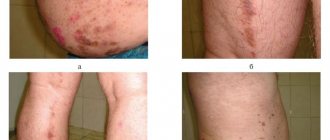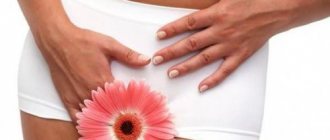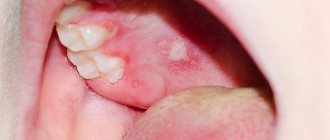Our ears, like other human organs, are susceptible to various diseases and pathologies. The penetration of pathogenic microorganisms into them can cause ear inflammation in adults and children.
An acute inflammatory process in the ear is called acute otitis media. Acute otitis media is divided into several subtypes, based on the location and nature of the inflammation. Today's hero of our article is acute purulent otitis media.
Suppurative otitis media is an infectious inflammation of the middle ear. Because of this, purulent masses form and accumulate in the tympanic cavity.
As medical statistics show, acute otitis media is a common diagnosis: any adult and child are susceptible to it. This is the most common form of otitis media.
Inflammation usually develops against the background of colds and other diseases of the nasopharynx. But if you can sit out a cold at home, then otitis in a child and an adult should be treated exclusively by an ENT doctor. Incorrect treatment of acute otitis, and especially its absence, can result in chronic inflammation, provoke hearing problems and lead to more dangerous consequences, for example, meningitis.
Causes
Acute purulent inflammation of the middle ear is a consequence of the penetration of pathogenic microflora into it and its activation against the background of a decrease in the body’s own defenses.
Often the infection enters the middle part of the hearing organ through the inflamed auditory tube connecting the nasopharynx to the ear. With sinusitis, sinusitis, proliferation of adenoid vegetations, tonsillitis and other ENT diagnoses, pathogenic microflora enters the auditory tube (for example, with sharp blowing of the nose), it becomes inflamed - eustachitis develops. If treatment was ignored or was ineffective, pathogenic organisms enter the ear through the auditory tube. This is the first variant of infection.
The second way is through a rupture in the eardrum or damage in the mastoid process (the area of the temporal bone associated with the middle ear). Otitis of this etiology is called traumatic.
A rarer route is through the blood, when during infectious diseases, for example, scarlet fever or measles, pathogenic flora spreads through the bloodstream and enters the hearing organ.
The disease develops due to decreased immunity. Factors provoking this may be:
- problems with the endocrine system;
- lack of vitamins;
- bad habits;
- diseases of the ENT organs;
- diabetes;
- frequent entry of water into the ear (local immunity decreases).
Outer and inner ear: causes of inflammation
Otitis externa can develop due to improper ear hygiene. If you don't take care of your ears, dirt will accumulate in them, and this is a favorable environment for the growth of bacteria. Excessive hygiene is also harmful: earwax is a natural barrier against the penetration of bacteria into the ear. If you diligently clean the ear canals every day, a person loses this barrier and opens the way for pathogens. Another mistake that leads to acute ear inflammation is cleaning the ears with sharp objects that are not intended for this (toothpicks, matches, hairpins). Such actions can lead to damage to the auricle, which in turn leads to infection entering the wounds. Another factor is dirty water that gets into the ear, which contains pathogens. “Swimmer’s ear” is another name for this type of disease.
As we have already said, inflammation of the internal region occurs due to undertreated otitis media, if due attention has not been paid to the treatment of otitis media. Bacteria can also get here from the meninges, for example, with meningitis. This type of inflammation can be caused by injuries and fractures of the skull or temporal bone.
In order to recognize the disease in time and choose the right treatment, you need to be able to identify its signs.
Symptoms of purulent otitis media
A distinctive sign of the disease, which distinguishes it from non-purulent otitis media in adults and children, is discharge of purulent exudate from the ear. This sign is not always present. Suppuration is possible only when pus ruptures the eardrum. If the eardrum has not ruptured, the purulent accumulations cannot leave their location, which can lead to possible complications.
Another sign of suppurative otitis media is ear pain. It can be either tolerable and non-intense, or simply unbearable.
During the period of inflammation, body temperature may rise, although this is not a mandatory sign.
Patients also note hearing loss, ear congestion and headaches.
It is more difficult to understand that a child has developed otitis media, since children cannot clearly explain what and how it hurts. In infants, diagnosis is even more difficult. But based on his behavior, one can suspect ear inflammation: the baby is capricious, has become whiny, and refuses milk.
The disease occurs in stages: inflammation goes through several stages. These stages of otitis differ from each other in symptoms.
Inflammatory diseases of the external ear
IN
Inflammatory diseases of the external ear are common diseases that occur in all age groups and are characterized by a variety of clinical manifestations, requiring a clear physician orientation in matters of diagnosis and treatment. It is very important to be able to use clinical data to differentiate otitis externa from acute otitis media and mastoiditis, since a diagnostic error or inadequate treatment can cause serious complications, including intracranial ones, that threaten the patient’s life.
Etiology and clinic
In recent years, there has been a tendency towards an increase in the frequency of external otitis, which is due, in particular, to unfavorable environmental factors, irrational use of drugs, primarily antibiotics. One of the leading factors in the pathogenesis of external otitis is trauma to the epidermis of the external auditory canal, in particular after severe removal of wax or discharge from the ear with hard objects, as a result of maceration when water gets into the ear, with chronic purulent otitis media. Speaking about the need for proper, gentle removal of sulfur, one should take into account its bactericidal and fungicidal properties, mechanical protection of the skin of the external auditory canal from unfavorable exogenous factors.
Inflammation of the outer ear can be caused by various microflora: Staphylococcus aureus, Streptococcus pyogenes, Pseudomonas aeruginosa, Enterobacter, fungi of the genus Candida, Aspergillus, Penicillium,
viruses, pathogens of syphilis and tuberculosis.
Pseudomonas aeruginosa is highly resistant to most antibacterial drugs. When identifying this gram-negative aerobe, one must certainly take into account the possibility of nosocomial infection during diagnostic and therapeutic manipulations in the ear canal.
Otomycoses
One of the current problems is the progressive increase in external otitis of fungal etiology (otomycosis), especially in childhood. The increase in the incidence of otomycosis in children is due to dysbacteriosis and various factors that weaken the resistance of the child’s body. The occurrence of otomycosis in both adults and children can be caused by immune, hormonal, metabolic disorders, allergies, long-term treatment with antibacterial, hormonal drugs, cytostatics, and radiation therapy of neoplasms. The occurrence of mycotic lesions of the outer ear may be preceded by long-term local use of glucocorticoid drugs for otorrhea caused by a purulent-inflammatory process in the middle ear.
The development of otomycosis is possible when working in dusty conditions, in pressure complexes with high pressure and humidity.
Characteristic symptoms of otomycosis are intense, almost constant itching, noise in the ear, and discharge from the ear. The nature of the discharge depends on the type of pathogen: caseous masses of white or grayish color are characteristic of Candida albicans
, black -
Aspergillus niger
, yellowish -
Aspergillus flavus
, greenish -
Penicillium
. Pain in the ear is absent or mildly expressed, but quite often patients complain of local headache (Kunelskaya V.Ya., 1989, Evdoshchenko E.A., 1985, Apostolidi K.G., 1996).
An increase in the proportion of mycotic infection in ear pathology has led to an increase in atypical clinical manifestations and complicated forms of the disease.
In 1960, A.K. granulating external otitis as an independent nosological form
, the occurrence of which is caused by the penetration of the
Monilia
. The disease lasts a long time, with the formation of granulations on the eardrum and the walls of the ear canal.
A rare form of inflammatory lesions of the outer ear is malignant or necrotizing otitis externa.
, the frequency of which is less than 1% of all dermatoses of the external ear. It occurs mainly in older people suffering from diabetes. The severity of the disease is due to sequestration of the bony part of the external auditory canal, the possibility of developing intracranial complications and damage to VII, IX–XI pairs of cranial nerves. Mortality in complicated necrotizing otitis remains high, ranging from 23 to 67% (Gukovich V.A., 1988).
Limited and diffuse otitis externa
Infectious external otitis may occur in the form of a boil in the external auditory canal
(limited external otitis – otitis externa circumscripta) or in the form of “spread” inflammation (
diffuse external otitis
– otitis externa diffusa).
The main complaints of patients are pain and itching in the ear. The itching is minor and is observed only at the beginning. Patients are primarily concerned about intense pain in the ear, reaching a maximum on the 3rd–4th day of the disease, intensifying with movements in the temporomandibular joint (chewing, opening the mouth), with possible irradiation to the temporal or maxillary region.
Inflammation of the outer ear should be differentiated from inflammation of the middle ear (Table 1).
In cases where the boil is localized on the posterior wall of the ear canal, it is often necessary to make a differential diagnosis with mastoiditis, a possible complication of acute otitis media, in which the process spreads to the cellular system of the mastoid process. The main clinical differences, in addition to those listed above, are presented in Table 2. In doubtful cases, correct diagnosis is facilitated by the analysis of X-ray symptoms. In the projections of Schüller, Mayer, Stenvers, with mastoiditis, loss of air supply and disruption of the structure and integrity of the bone base of the mastoid cells are determined, while with a boil of the external auditory canal, no radiological changes in the temporal bone are observed.
When hemolytic streptococcus penetrates into damaged skin of the auricle, erysipelas
. The main symptoms of erysipelas are a characteristic sharp, shiny-tinged, hyperemia of the auricle, involving the earlobe and clearly demarcated from unaffected areas; pain, infiltration and increase in the volume of the auricle. Hyperthermia and chills are noted.
Neuroviral infection with severe course - ear form of herpes zoster
– Herpes zoster oticus, a distinctive feature of which is an acute rash of pink spots, and soon vesicles with transparent contents, located along the sensory nerves. There are sharp neuralgic pain in the ear and the corresponding half of the head, itching, tingling, dizziness, sensorineural hearing loss and damage to the facial and trigeminal nerves. An increase in body temperature and general malaise are often observed. The blisters begin to dry out on days 6–8, and the crusts disappear by the end of the third week of the disease. Diagnosis is especially difficult in the first days of the disease, when there are still no characteristic herpetic rashes, and neuralgic pain can simulate various dental and neurological diseases.
A very common, painful disease is microbial eczema of the outer ear.
- a secondary erythematous-vesicular disease that develops against the background of chronic streptococcal or fungal skin lesions, in which the process may involve both the auricle and external auditory canal, and the eardrum. Eczema occurs in cases of mechanical, chemical or thermal irritation of the skin, in the absence of proper treatment and hygiene with prolonged suppuration from the ear. The disease does not have a single etiology and can be explained from the point of view of two complementary theories - neurogenic and allergic. Severe mental trauma, damage to peripheral nerves, various diseases of internal organs, hormonal disorders, diabetes mellitus, and rickets contribute to the development of eczema. Clinically, the disease has features of both a microbial process and eczema, that is, it is manifested by the formation of small vesicles in the area of the infectious focus, the presence of crusts, erosions, cracks, and purulent discharge. The earliest and most persistent symptom is intense itching, especially pronounced during exacerbations of the process.
Treatment
Thus, inflammatory diseases of the outer ear are varied in etiology, pathogenesis, clinical picture and severity. The structure of the causative agents of external otitis is heterogeneous and includes bacterial gram-positive and gram-negative microbial flora, fungi and viruses. This determines the need for a differentiated approach to the treatment of each individual patient, based on detailed clinical and laboratory research.
Difficulties in treatment are largely due to the increasing virulence of pathogens and their resistance to widely used antibiotics and antiseptics, which is due to the unreasonably wide, often uncontrolled use of the latter in clinical practice.
Antibiotics
Drug therapy for inflammatory diseases of the outer ear involves the rational use of antibiotics, based both on a detailed assessment of the patient-microorganism-drug interaction system, and on the results of identifying the microorganism that caused the disease during bacteriological examination. An indispensable condition for prescribing an adequate antibacterial agent is to establish the sensitivity of the flora in vitro
using discs impregnated with antibiotics.
Unfortunately, in some cases, for example, when isolating mixed flora, the reaction of bacteria to an antibacterial agent in vivo
may be altered (Belousov Yu.B., Moiseev V.S., Lepakhin V.K.).
In recent years, fluoroquinolones and oral cephalosporins have been shown to be highly effective
, having a wide spectrum of action, having the ability to easily penetrate tissues, creating a high concentration in them. However, one should take into account the resistance of Pseudomonas aeruginosa to all group I cephalosporins and most group II and IV cephalosporins, as well as the side effect of fluoroquinolones, which consists in their penetration into the growth layer of the bone, which precludes the use of fluoroquinolones in childhood.
Macrolide antibiotics have been used in the treatment of bacterial infections of the upper respiratory tract and ear for more than 30 years.
, of which erythromycin is the best known.
The use of erythromycin is limited by its poor absorption when administered orally, low bioavailability, relatively narrow spectrum of antibacterial action and the likelihood of developing side effects from the gastrointestinal tract. Among the macrolide antibiotics synthesized recently is roxithromycin, which has improved physicochemical, biological and pharmacokinetic properties. The spectrum of antibacterial activity of roxithromycin includes streptococci, some types of staphylococci, and atypical microorganisms ( Mycoplasma, Legionella, Chlamydia
). The drug penetrates well into tissues, fluids and cells of the body, creating high intracellular concentrations. It is quickly absorbed in the gastrointestinal tract and is resistant to acidic environments. For adults, the drug is prescribed either at a dose of 150 mg twice a day or 300 mg once a day, for children - at a rate of 5 mg/kg twice a day.
Enzyme preparations
Among the means of antibacterial therapy, there is a large group of drugs that are alternative to antibiotics. Their use becomes especially relevant when isolating antibiotic-resistant strains, when it is impossible to carry out antibiotic therapy due to intolerance by the patient. It is advisable to use enzymes, in particular lysozyme
and
trypsin
. Lysozyme and trypsin are non-toxic and do not cause allergic reactions. The combined use of these enzymes (Veremeenko K.N. et al., 1974, Brofman A.V., 1980) promotes the healing of damaged tissues and inhibits the growth of pathogenic microorganisms, and provides an immunomodulatory effect.
The disadvantages of enzyme preparations are their instability under conditions of unstable pH and temperature, pyrogenic properties, and therefore the use of enzymes immobilized on a cellulose carrier is promising (Davidenko T.I. et al., 1993, Apostolidi K.G., 1996).
The use of multienzyme turundas containing immobilized trypsin and lysozyme, as well as purified trypsin powder immobilized on a cellulose carrier, has a number of advantages in the treatment of external otitis of bacterial etiology (staphylococci, Pseudomonas aeruginosa, Proteus, Klebsiella, Escherichia coli), otomycosis (fungi of the genus Candida, Aspergillus
), granulosa external otitis.
The treatment method consists of either daily or every other day injection of turunda with immobilized enzymes into the external auditory canal
after mandatory thorough evacuation of pathological discharge from it. Treatment for 10–14 days allows for recovery. A persistent clinical effect is confirmed by the results of a microbiological study. The advantage of enzyme therapy is the preservation of the normal flora of the external auditory canal, which significantly reduces the risk of colonization by pathogenic microorganisms and prevents relapse of the disease.
Treatment of otomycosis
A serious problem is the treatment of otomycosis, especially in children. The most effective can be considered a complex of therapeutic measures, including both a direct effect on the pathological focus in the outer ear
, and
restoration of intestinal microbiocenosis
. Intestinal dysbiosis is a determining factor in maintaining disturbances in the microbiocenosis of the external ear, and therefore, in case of otomycosis, the elimination of dysbiotic conditions of the intestine is justified (Naumova I.V., 1999).
Modern antifungal drugs
broad spectrum of action have significantly higher therapeutic activity and bioavailability in comparison with traditionally used nystatin.
against fungi of the genus Candida
.
Triazole compounds ( ketoconazole, fluconazole
) are highly effective, inhibiting the synthesis of sterols in fungal cells and blocking a number of cytochrome-dependent enzymes.
For topical use, antifungal drugs may be recommended, prescribed, according to the mycogram, on the turundas once a day for 3–4 weeks.
of eubiotics for 1–3 months
– preparations of bifidobacteria, E. coli, lactobacilli.
It should be taken into account that with otomycosis in children, all types of physiotherapeutic effects on the ear, the use of hormonal drugs, as well as penicillin and tetracycline antibiotics are contraindicated.
For indolent, difficult-to-treat processes, along with antibiotics and antihistamines, the use of immunomodulators and adaptogens is indicated.
Eleutherococcus extract is used orally, 20–30 drops per day for a month, it is well tolerated. For the purpose of antiviral and immunomodulatory effects, it is advisable to use interferon inducers of general and local action and recombinant a-interferon.
Laser therapy
At the Ear, Nose and Throat Clinic of the MMA named after I.M. Sechenov has accumulated significant experience in the use of therapeutic lasers in the treatment of inflammatory diseases of the external ear. The variety of laser systems currently available allows the doctor to choose the type of laser radiation depending on the task at hand. Thus, helium-neon laser
(red spectrum range, wavelength 0.63 µm).
To influence the deep layers of soft tissues of the external auditory canal, it is advisable to use low-energy laser radiation in the near-infrared region of the spectrum - infrared lasers
with a wavelength of 0.8–1.2 µm. The light guide is inserted into the fibrocartilaginous part of the auditory canal or, if it is sharply narrowed, it is installed in the tragus area. The ability of laser radiation to provide anti-inflammatory, analgesic, immunocorrective, hyposensitizing effects allows one to achieve a lasting clinical effect during a course of therapy consisting of 7-10 daily sessions lasting 3-5 minutes (Ovchinnikov Yu.M. et al., 1996).
Ozone therapy
In recent years, ozone has been used to treat infectious and inflammatory diseases of the outer ear (Velikanov A.K. et al., 1994, 1995, Ovchinnikov Yu.M., Sinkov E.V., 1999). The use of ozone in medicine is based on its anti-inflammatory, bactericidal, antiviral, fungicidal, immunocorrective, and analgesic effects. It is characteristic that ozone is equally active against gram-positive and gram-negative microflora, fungi and has a neutralizing effect on microbial toxins.
Both gaseous ozone and ozonated solutions are used to wash the ear, in particular, an ozonated isotonic solution of sodium chloride, obtained by bubbling a solution of 0.9% NaCl with ozone until an ozone concentration of 5 mg/l is achieved. A necessary condition for ozone therapy is the elimination of excessive ozone accumulation in the room and the use of an insulator sealed around the auricle during treatment sessions. The course of ozone therapy is 6–10 sessions with the duration of one session being 5 minutes. Ozone is used in complex treatment along with the prescription of drug therapy, which can significantly reduce the time of treatment of patients and, accordingly, reduce economic costs. The use of ozone increases the effectiveness of antibacterial drugs. The therapeutic effects of ozone are of particular relevance for patients with external otitis, suffering from allergic diseases for which antibiotic therapy is impossible.
Phototherapy
A serious problem is the treatment and prevention of external otitis under conditions of exposure to extreme factors on the human body, such as high blood pressure, antiorthostatic hypokinetic conditions, deep-sea diving, and space flights. The impact of these factors leads to a decrease in the body's defenses, activation of pathogenic and opportunistic microflora and, as a consequence, to the development of acute inflammatory diseases, including external otitis (Viktorov A.N., 1987, Ovchinnikov Yu.M., Yarin Yu M., 1997).
One of the promising but insufficiently studied treatment methods is phototherapy with polychromatic light of a wide optical range.
, which has antibacterial and fungicidal activity. Research conducted at the ENT Clinic of the MMA named after I.M. Sechenov proved the effectiveness of light in the optical range, similar to the sun, as a preventive and therapeutic agent for external otitis caused by Staphylococcus aureus, Enterobacter, Pseudomonas aeruginosa, and fungi (Ovchinnikov Yu.M., Yarin Yu.M., 1997, 1999). It has been established that even a single exposure to the solar spectrum is detrimental to bacterial microflora. For fungicidal therapeutic effects, it is necessary to carry out at least three sessions, since a single effect on the fungal flora can enhance its growth. Phototherapy has no effect on spores of pathogenic fungi. The fungicidal effect is manifested in the initial phase, the phase of accelerated uneven growth and the development phase of the fungal colony. Carrying out complex therapy using a xenon irradiator made it possible to reduce the time for relief of diffuse bacterial external otitis by 4–6 days. To ensure a lasting positive result for otomycosis, it is necessary to carry out a second course of treatment after 7 days, including 3 light therapy sessions.
Carrying out courses of preventive effects on the external auditory canals for persons exposed to extreme factors during work allowed to normalize the indicators of microbial contamination of the skin of the auditory canals and the qualitative composition of microbial associations, increasing colonization resistance.
Stages of otitis media
There are three stages of acute otitis: pre-perforative, perforative and reparative. But this does not mean that a person will necessarily go through all these stages. With good immunity and timely visits to an otolaryngologist, it is possible to stop inflammation in the initial phase.
The first stage is the so-called acute catarrhal otitis media (acute non-purulent otitis media). Catarrhal otitis in children and adults occurs with intense pain in the ear, which increases towards night. At this moment, it’s as if something is pulsating or shooting in the ear; the pain can radiate to the teeth or the temporal part of the head. This condition is very difficult to tolerate. The ear tissues swell, the eardrum and auditory ossicles become less mobile, which certainly affects hearing acuity. During this same period, noise in the ear appears. Temperatures may rise to fairly high levels. The patient feels lethargic, tired, and loses his appetite. Further development of catarrhal otitis in a child and an adult patient can be prevented if in time, when the first signs of inflammation are detected, you consult an otolaryngologist. If treatment of acute otitis in children and adults was not carried out on time, the second stage occurs.
The perforated stage is when the pus accumulated in the tympanic cavity breaks through the eardrum, forming a hole in it - a perforation. It is at this stage that suppuration from the ear canal is observed. At the same time, the patient feels noticeable relief: the pain subsides, the body temperature drops, and the patient’s general condition improves. Suppuration can last up to five to seven days. If a natural rupture of the eardrum does not occur, the otolaryngologist will do it forcibly.
By the way, it is not pus that may accumulate in the tympanic cavity, but serous fluid. In this case, a person is faced with acute serous otitis. But this is a topic for a separate article.
The reparative stage is the final stage in the development of the disease. This is the so-called healing stage. The suppuration stops, the restoration of the eardrum begins, and hearing gradually returns to normal.
Typically, the disease, provided that all three stages are completed, lasts two to three weeks.
Distinctive features
As the ENT doctor notes, all options should not be compared with a herpes infection that manifests itself on the lips. For example, herpes in the ear leads to otitis media.
“We know that there are three types of otitis in humans - external, that is, the one that forms near the ear canal of the ears, otitis media and internal otitis, when a person suffers from serious health problems and dizziness. If we are talking about a herpetic infection, then most often we are talking about damage to the outer ear and skin here. It happens less often that herpes affects the area deeper or behind the membrane,” says Vladimir Zaitsev.
A herpetic infection is much stronger than a viral or even bacterial one. This is due to the fact that such infections take longer and are more difficult to treat. One of the reasons is the difficulty of diagnosis, since not all doctors immediately suspect that the causative agent is herpes.
“There are often situations when a person has already had otitis media before and even without the development of purulent processes. Accordingly, everything went easily and quickly for him, he remembered that there were no problems. And so the situation repeats itself, but let’s say the pain is worse, even after a few years, he again starts treatment according to a similar scheme, but it doesn’t work. The infection here is different, and it requires a special approach,” explains Zaitsev.
My ear is blocked. How to distinguish otitis media from wax plug Read more
Chronic suppurative otitis media
Chronic inflammation is always preceded by acute inflammation. The course of the disease is not accompanied by such striking symptoms as the acute form, so many do not immediately seek medical help, thereby wasting time, and the disease continues to progress.
The main sign of chronic inflammation is constant suppuration from the ear canal. In this case, there may be no pain, or it will be mild, and the body temperature will be normal.
The disease is divided into mesotympanitis and epitympanitis. With mesotympanitis, inflammation covers the mucous membrane of the tympanic cavity without affecting the bone structures. With epitympanitis, destructive processes occur in bone tissue.
In order not to bring your condition to chronic inflammation, which will then have to be difficult and long to treat, it is important to contact an otolaryngologist at the acute stage of the disease when the slightest signs of the disease appear.
Symptoms
The acute course of the disease is characterized by a rapid onset and pronounced symptoms.
With a disease of the outer ear, a person experiences pain inside, which intensifies when pressing on it from the outside. Acute pain occurs when swallowing and chewing food. The ear itself swells and turns red. The skin of the auricle is itchy, the patient's complaints are reduced to a state of stuffiness and ringing in the ear.
In acute otitis media, the main sign of inflammation is the sudden appearance of sharp shooting pains, which become stronger by night. The pain can radiate to the temples, left or right frontal parts, to the jaw - it is very difficult to endure even for an adult, not to mention children. The following symptoms are also characteristic of acute otitis media:
Friends! Timely and correct treatment will ensure you a speedy recovery!
- fever (up to 39°C);
- tinnitus;
- hearing loss;
- lethargy, malaise, loss of appetite;
- in the exudative form, discharge comes from the ear (usually this discharge is transparent or white);
- Acute purulent otitis media is characterized by suppuration from the ear.
The main symptom of labyrinthitis is dizziness. They can last a few seconds, or they can last for several days.
If you notice one or more of the symptoms described above, you should immediately consult a doctor for treatment.
Complications of acute purulent otitis
If the disease is treated late or incorrectly, acute inflammation can become chronic.
Chronic purulent otitis is the most common complication of the acute form. There are two forms of chronic suppurative otitis media – mesotympanitis and epitympanitis. The disease can also lead to:
- labyrinthitis - inflammation of the inner ear;
- to the spread of purulent inflammation to the membranes of the brain (meningitis, brain abscess);
- sepsis;
- paresis of the facial nerve, when the face becomes asymmetrical and the affected side loses its mobility;
- mastoiditis – inflammation of the mastoid process of the temporal bone;
- hearing loss or complete hearing loss.
Diagnostics
For an experienced otolaryngologist, diagnosing the disease is not difficult. When making a diagnosis, the ENT doctor relies on the patient’s complaints and the results of otoscopy (examination of the hearing organ). The patient may be referred for a number of laboratory tests that will confirm or refute the presence of inflammation. To assess the degree of hearing impairment, audiometry or tuning fork testing is performed. To assess the condition of the components of the middle ear, tympanometry is performed. In severe cases, the patient is sent for X-ray, CT, MRI.
Treatment of acute purulent otitis
Treatment of otitis media in adults, and especially children, should be carried out under the supervision of an ENT doctor. It should be borne in mind that the treatment regimen will vary depending on the current phase of the disease.
So at the initial stage, until the eardrum ruptures, the doctor prescribes ear drops (Otinum, Otipax, etc.), which have an anti-inflammatory and analgesic effect. There is no point in using local antibiotics in this case, since the problem is behind the membrane, and if there is no hole in it, the medicine will not reach its target. Therefore, the patient is prescribed general antibacterial drugs.
As soon as the eardrum ruptures, the above drops cannot be used, as they can harm the labyrinth of the inner ear. In this case, antibacterial ear drops, such as Otofa or Normax, are prescribed.
To relieve tissue swelling, you can use antihistamines (Zodak, Zyrtec, etc.) and vasoconstrictor nasal drops (relieves swelling of the auditory tube).
When the temperature rises, it is recommended to use antipyretic drugs (for example, Nurofen or Paracetamol).
Any drug, especially an antibacterial one, should be prescribed exclusively by a doctor and taken strictly taking into account the dosage and frequency of administration.
Don't forget about physical therapy. Physiotherapy helps relieve inflammation and speed up recovery.
As therapeutic procedures, the otorhinolaryngologist performs toileting of the middle and outer ear, placing medicinal micro-compresses, and rinsing the tympanic cavity with medicinal solutions.
If the purulent masses were unable to rupture the eardrum on their own, the otolaryngologist “helps” by making an incision in it and releasing the purulent accumulations outward.
Carrying out treatment
It is much easier to cure acute otitis media if treatment for the disease begins as early as possible. Treatment should be carried out under the supervision of an otolaryngologist. Complex treatment includes the following activities:
- for acute pain, taking analgesics is indicated to relieve pain;
- to bring down the temperature you need to take antipyretic drugs;
- in difficult cases, antibiotic treatment is carried out;
- local treatment consists of using special ear drops, which are prescribed individually in each case. Self-selection of drops, as well as antibacterial drugs, is fraught with dangerous consequences for health.
- Antihistamines help relieve swelling;
- a good effect is achieved during physiotherapeutic procedures;
- surgical intervention: opening of the eardrum (paracentesis) is carried out if spontaneous rupture has not occurred.
All ENT doctor’s prescriptions must be followed in full: after all, following treatment recommendations is the key to a quick recovery.
Physiotherapy for acute purulent otitis media
An important stage in the treatment of the disease, which enhances the effect of drug therapy and accelerates the recovery process, are physiotherapeutic procedures.
For acute purulent otitis, the following types of physiotherapy are effective:
- infrared laser therapy (reduces inflammation and relieves swelling of tissues);
- vibroacoustic therapy (improves blood and lymph flow, providing a good therapeutic effect for inflammation of the middle ear);
- ultraviolet irradiation (has a bactericidal effect);
- ultrasonic medicinal irrigation (has an anti-inflammatory effect);
- photodynamic therapy (helps relieve inflammation);
- ultrasound therapy (promotes deeper penetration of medicinal ointment, relieving inflammation and swelling of tissues);
- infrared laser exposure (stops the inflammatory process).
Which procedures should be used and how many sessions will be needed is determined by the ENT doctor, based on the patient’s condition.
Prevention
There are no specific preventive measures to avoid suppurative otitis media. To reduce your risk of getting sick, strengthen your immune system and promptly treat any ENT infection you encounter. An important point: treatment should not only be timely, but of high quality: no self-medication, only competent assistance from an otolaryngologist. There is no need to start the disease. At an early stage, any disease is much easier to treat: in many cases, the accumulation of purulent masses in the middle ear could be easily avoided by contacting an ENT doctor in time.
If you or your loved ones are faced with hearing problems, do not waste time: make an appointment by calling +7 (495) 642-45-25 and come.
We will definitely help you!
What not to do during treatment
Some patients are overly self-confident and believe that a disease such as otitis media can be easily cured with the help of folk remedies and “grandmother’s” recipes. A wide variety of methods are used. This is a huge misconception!
The first mistake is that no foreign objects should be placed in the ear canal. Some are trying to use phytocandles, others, for example, geranium leaves. Such measures are fraught with the fact that leftover leaves may get stuck in the ear, which will provoke increased inflammation.
The second mistake is the use of heat and warming compresses for the purulent form of the disease. Some people replace compresses with a heating pad. At this stage of the disease, thermal heating will only increase the proliferation of bacteria.
The third mistake is trying to instill various oils or variations of alcohol into the ears. If during such treatment a perforation of the eardrum occurs, such instillations will not only cause pain, but will also cause scarring in the middle ear and eardrum.











